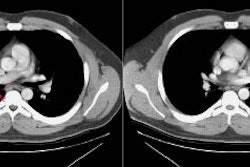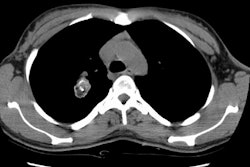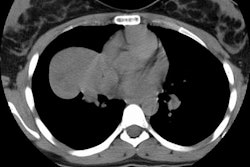Bronchoalveolar carcinoma: histopathologic study of evolution in a series of 105 surgically treated patients.
Dumont P, Gasser B, Rouge C, Massard G, Wihlm JM
STUDY OBJECTIVE: The clinical characteristics, histopathologic condition, and outcome of bronchoalveolar carcinoma(BAC) were studied to detect possible prognostic indicators. DESIGN: A retrospective review was conducted of 97 patientswho had a curative resection for BAC between 1975 and 1993. PATIENTS: There were 83 men and 14 women with a meanage of 59 years (30 to 75 years). INTERVENTIONS: Resection comprised lobectomy in 84 cases (87%), bilobectomy,pneumonectomy, and a wedge excision. RESULTS: Sixty-two percent of patients were asymptomatic. The radiographicpattern was a solitary nodule in 85% of patients and lobar pneumonitis or diffuse infiltrate in 15%. In 12% of patients, thesolitary lesion had been stable for period of 2 to 7 years before diagnosis. The TNM staging of the disease included 71 patientswith stage I, 14 with stage II, and 12 with stage IIIA. Review of the gross pathologic features revealed well-circumscribedtumors in 88% of patients and diffuse or multifocal tumors in 12%. Mucinous differentiation was present in 43% of patients,vascular invasion in 22%, and aerogenous spread in 49%. Overall survival was 89% at 1 year, 76% at 2 years, 48% at 5years, and 39% at 10 years. The survival curves according to histologic features showed a statistically significant differencebetween diffuse lesions and nodular lesions, between lesions with and without aerogenous spread (diffuse lesions excluded),and between lesions with and without vascular invasion. CONCLUSIONS: The natural history of BAC is especially influenced by its nodular or diffuse nature, vascular invasion, and aerogenous spread.




